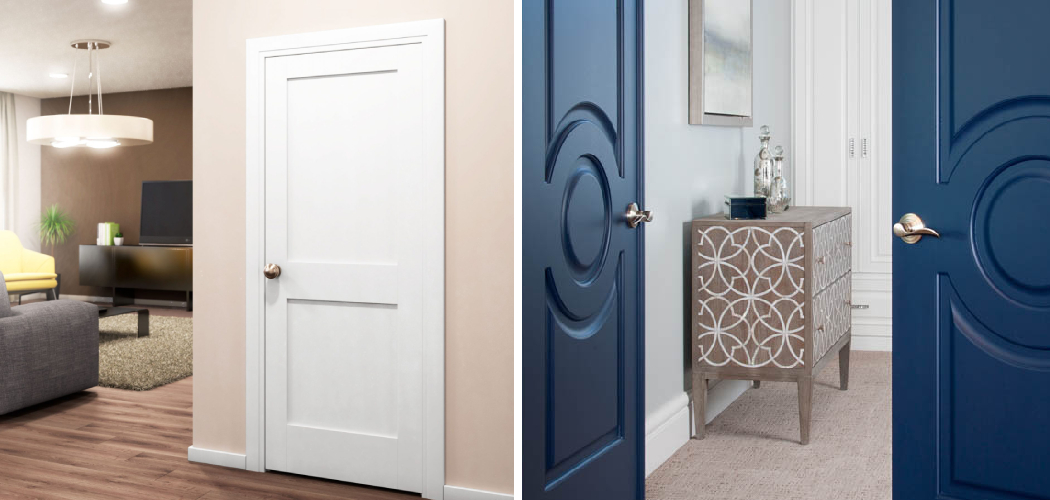When it comes to the interior design of your home, choosing the right door style can greatly contribute to the overall look and feel. The type of door you select will also determine how much natural light enters a room, so selecting an appropriate style is important for aesthetic and practical purposes.
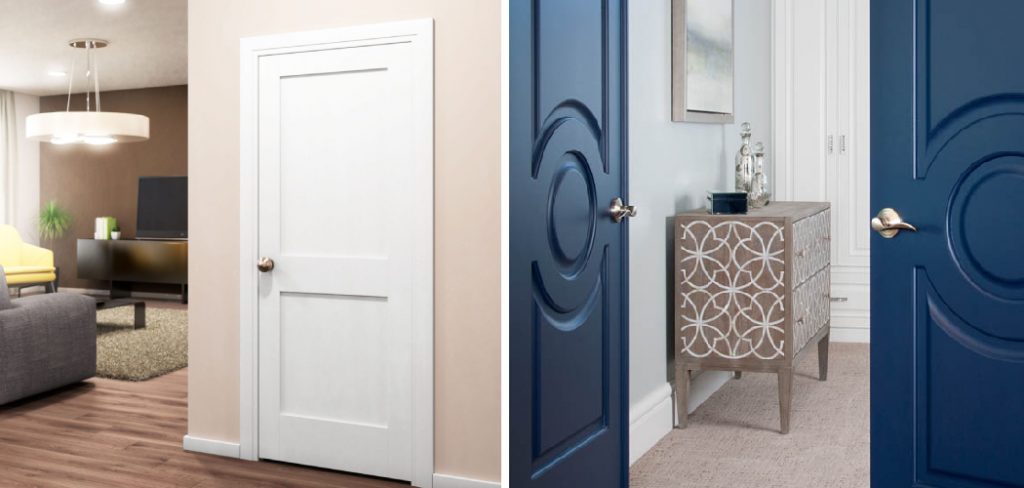
There are many different types to choose from regarding interior door styles. Each has advantages and disadvantages that you should consider before selecting. One of the biggest benefits of selecting an interior door style is that it can add a unique touch to any room in your home. You can find step-by-step instructions on how to choose interior door style in this blog article.
Step-by-Step Processes How to Choose Interior Door Style
Step 1: Inspect Before You Begin
Before you can start shopping for a new door, take the time to inspect your existing interior doors. Measure the height and width of each door and the thickness of the door frame and jamb. Note any existing hinges or hardware that need to be removed before installation of a new door. This information will help you determine the best replacement door for your home.
Step 2: Identify the Material of Your Interior Doors
The material of an interior door is a crucial factor when choosing a new one. Choose from wood, fiberglass, steel, or composite materials to suit your needs and tastes. All materials have their benefits for specific applications, such as soundproofing or fire safety. Consider which material is best suited for the location and purpose of each door.
Step 3: Decide on a Design or Style
The style of an interior door should match the theme of your home, whether you’re going for a modern design with clean lines or traditional detailing. Identify what appeals to you most and look out for styles that have been popular in recent years. Look into designs like raised panels, flat panels, French doors, and pocket doors for a classic look or contemporary options like glass-paneled doors for an upscale feel.
Step 4: Consider Your Space Requirements
Take the time to think about how much space you have available and what design elements will fit comfortably within the allocated space. Consider the door swing direction since this will determine the space required to open and close a particular door type.
Once you know your door size, it’s time to decide on a replacement that fits properly. You could opt for a standard size or customize your interior door to fit the available space best. This will ensure you achieve a perfect fit and avoid discomfort from having a door that is too big or small.
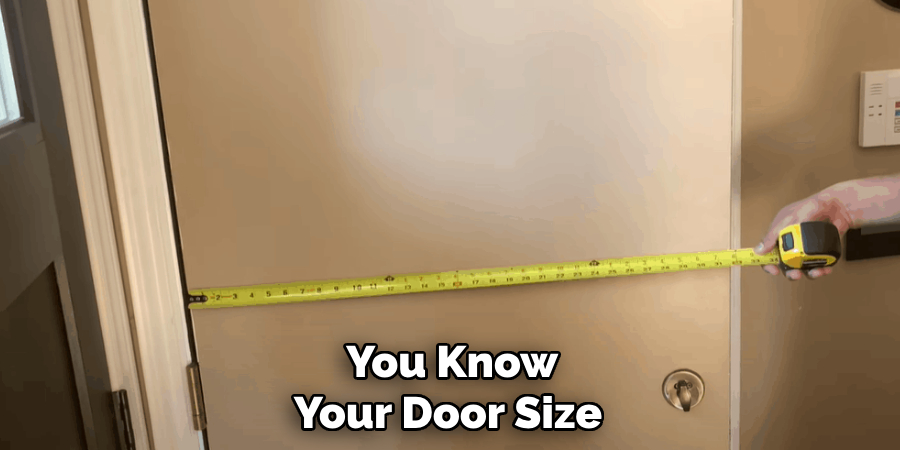
Step 5: Pick Out the Right Hardware
Each piece of hardware plays an important role in your interior doors’ overall look and function, from doorknobs to hinges. Consider the type of hardware you want to suit your desired aesthetic and its practical applications.
When it comes to interior doors, finishes are an important consideration. Look into pre-finished or factory-painted options that come in various colors for a low-maintenance choice. Alternatively, you could opt for an unfinished door, stain it yourself, and apply one or more coats of sealant for added protection.
Step 6: Evaluate Your Budget
Before you commit to a particular interior door, take the time to evaluate your budget properly. Consider the cost of each material and design, considering any extra features you may require. Calculate overall costs before making an informed decision.
To ensure your interior door is properly installed, having the right tools for the job is important. Invest in quality tools such as a circular saw and electric drill to help you with measuring, cutting, and screwing or nailing. Be sure to read through installation instructions beforehand to help you choose the right tools for the job at hand.
Step 7: Have Your New Door Professionally Installed
Despite having the right tools and knowledge, having your new interior door professionally installed by a qualified tradesperson is worth considering. This will guarantee that your door is securely fitted and functioning properly.
By following these steps, choosing the right interior door style for your home will be easy. With a little research, you can find a door that is aesthetically pleasing and practical in no time.
Safety Tips for How to Choose Interior Door Style
- Always check the local building codes and regulations to ensure you are compliant when changing interior doors in your home.
- Research the model before purchasing if you’re looking for a door with specific safety features such as fire resistance or soundproofing.
- Make sure that the door is properly measured and fitted, which can reduce the chances of it becoming loose or potentially dangerous.
- If you’re looking for a door with extra security features, such as reinforced locks and hinges, make sure to factor in the additional cost into your budget.
- Consider any additional safety features necessary for those living in your home, such as an alarm system or windows that can open from the inside.
- If you’re looking for an energy-efficient door, research the materials and insulation that the door is made of before purchasing.
- Remember any potential hazards, such as sharp edges or lead paint when selecting your interior doors. If there is a possibility for any of these risks, take the necessary precautions to ensure safety during installation.
These safety tips will help you ensure that you make the best decision when it comes to choosing an interior door style for your home.
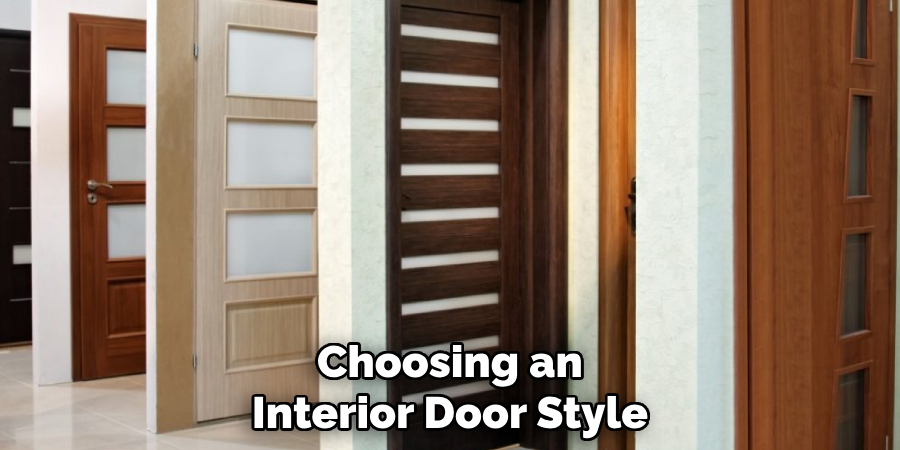
Maintenance Requirements for Interior Doors
While interior doors are generally quite durable and require minimal maintenance, there are still some simple steps you can take to keep them in optimal condition:
- Clean the door regularly with a soft cloth and mild detergent. This will ensure the finish is not damaged and help maintain its appearance over time.
- Add a coat of paint or varnish every few years to maintain the finish.
- Ensure the dampers are in good working condition and that all hinges and locks are well-lubricated to function properly.
- Check for any damage regularly, such as scratches or chips, and make any necessary repairs promptly.
- Inspect the weatherstripping around the door for any signs of wear and tear and replace it if necessary.
Following these simple maintenance steps ensures that your interior doors remain in top condition and last for many years.
Benefits of Customise Your Interior Doors
Adding custom interior doors to your home provides several benefits, such as:
- Unique Style and Character: With a custom door, you can choose the exact design and materials to create a unique look for your space.
- Increased Security: Custom doors often come with reinforced locks and hinges that provide extra protection for your home.
- It Has Improved Energy Efficiency: Custom doors are made with higher-quality materials and insulation to help keep your home more comfortable while reducing utility costs.
- Increased Value: Custom interior doors add a touch of class and sophistication to any home, which can increase its market value.
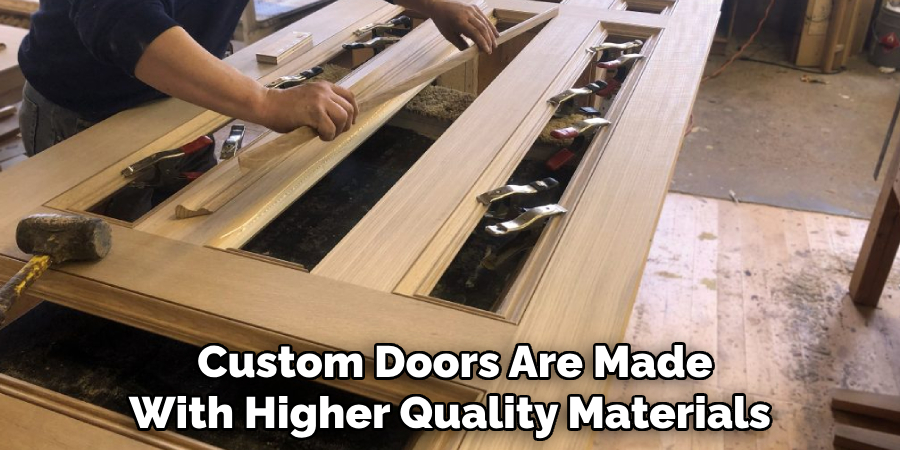
Adding custom interior doors to your home is an investment that will pay off in the long run. With their unique style and added security, these doors will provide your home with lasting value and beauty.
Are There Any Additional Costs Associated With Installing Interior Doors?
Installing interior doors is generally a straightforward process. However, there are some potential additional costs that you may need to consider. These include:
- Labor Costs: A professional carpenter or contractor typically charges an hourly fee when installing the door and associated hardware.
- Hardware Costs: Depending on the type of door you choose, you may need to purchase additional hardware, such as door knobs or handles.
- Paint/Varnish Costs: If the existing finish on the door is in poor condition, or if you’re looking to change the door’s color, you’ll likely need to purchase paint or varnish to refinish it.
These costs can add up quickly, so it’s important to factor them into your budget when planning for interior door installation. The cost will be approximate and vary depending on the type of door and materials used.
How Often Should You Replace Your Interior Door Hardware?
Replacing your interior door hardware is a great way to keep your doors looking and functioning at their best. You should replace door knobs and handles every few years, as they are subject to the most wear and tear. It may be time for an upgrade if you notice any signs of wear or damage, such as rust or cracks. Additionally, updating your door hardware regularly can keep your home secure and provide a stylish touch to any room.
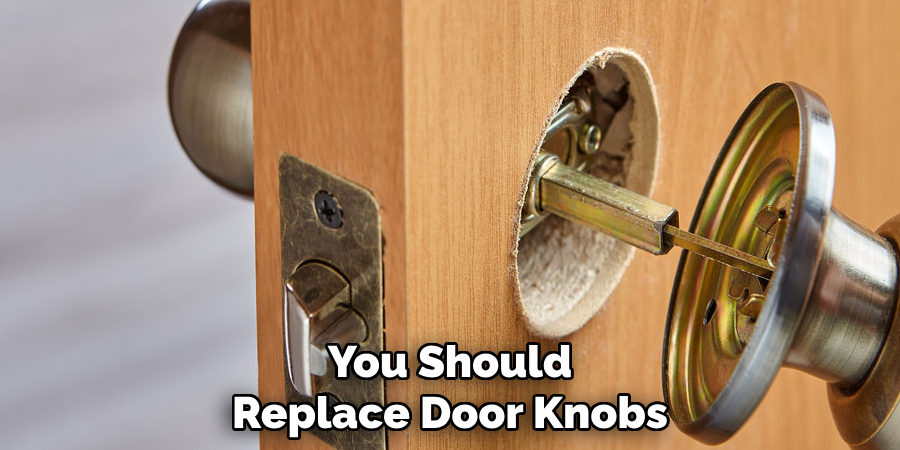
Conclusion
In conclusion, choosing an interior door style is an important decision to affect your home’s overall look and feel. You should consider the size of the room, its purpose, and what material you prefer when deciding on a specific type. Remember to consider any special features such as hinges, locks, or hardware necessary for a particular style. I hope reading this post has helped you learn how to choose interior door style. Make sure the safety precautions are carried out in the order listed.
